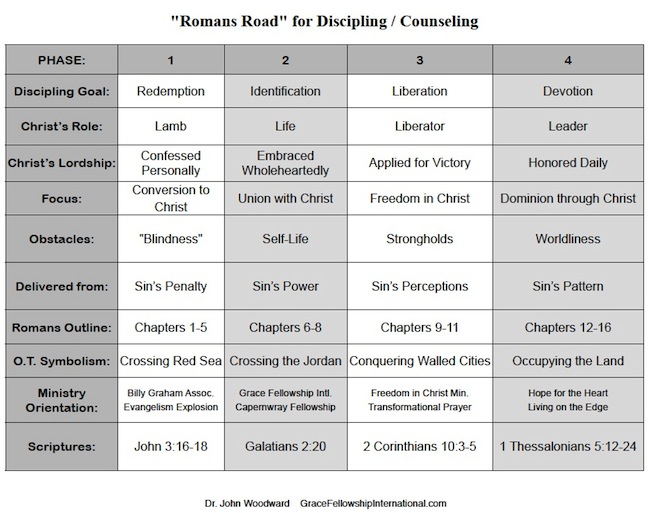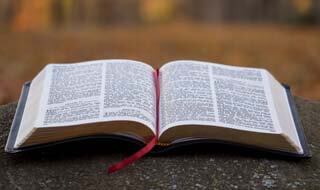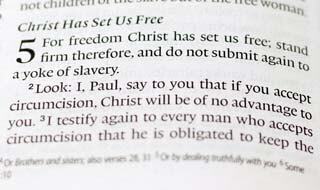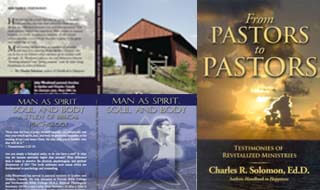The town where we live has a distinctive Christian symbol adorning the ridge above it.[1] Looking over the city is a cross. Lined with lights, its presence is very noticeable at night. To many, it is just a religious monument or community landmark; to those who know Jesus Christ, it symbolizes God’s redemptive love. Since this cross is near the church we served in Canada, I often saw it from a distance, but didn’t examine it up close. I had estimated its size as about 10′, but then was corrected—it is three times larger!
Similarly, many today underestimate the Cross. Maybe this comes from a lack of understanding. Why did Christ have to die? Was He just a martyr? A noble example? What does the Scripture mean when it speaks of Christian being “crucified with Christ”? How are we to “take up our cross daily”?
If we value abundant living, we can’t escape the centrality of this theme. Paul declared: “But God forbid that I should boast except in the cross of our Lord Jesus Christ, by whom the world has been crucified to me, and I to the world” (Gal. 6:6:14). In this series, let’s examine four “dimensions” of the Cross.
Dimension 1: THE CROSS OF CHRIST IS OUR MEANS OF REDEMPTION
This is the most familiar aspect of the Cross for the child of God. Those of us who have experienced the grace of salvation never tire of contemplating Christ’s crucifixion and resurrection. Through the Cross, Christ solved the problem of our guilt and condemnation before God. This spiritual malady is identified in our conscience and in the Scriptures. In spite of our “do your own thing” culture, none of us can escape the indictment of sin: “for all have sinned and fall short of the glory of God” (Rom. 3:23). And what is the judicial consequence of our sin? “For the wages of sin is death” (Rom. 6:23a). Thankfully the gospel adds, “but the gift of God is eternal life in Christ Jesus our Lord” (Rom. 6:23b).
When Christ began to predict His crucifixion, His disciples were stunned and confused. Peter even rebuked Jesus, claiming: “Far be it from You, Lord; this shall not happen to You!” (Matt. 16:21-23). They couldn’t grasp why the Messiah would face a horrific execution. Why was such suffering necessary?
The Bible gives us the profound answer to the why of the Cross: Christ’s sacrifice was the only way a perfectly just God could pardon sinners. As Paul stated,
“[Believers are] justified freely by His grace through the redemption that is in Christ Jesus, whom God set forth as a propitiation [atoning sacrifice] by His blood, through faith, to demonstrate His righteousness, because in His forbearance God had passed over the sins that were previously committed, to demonstrate at the present time His righteousness, that He might be just and the justifier of the one who has faith in Jesus” (Rom. 3:24-28).
How true that, “He came to pay a debt He didn’t owe because we owed a debt we couldn’t pay.”
Centuries before the birth of Jesus, God foretold that the Messiah would die a sacrificial death for us: “All we like sheep have gone astray; We have turned, every one, to his own way; And the LORD has laid on Him the iniquity of us all” (Isaiah 53:6). In The Cross Through the Scriptures, F. J. Huegel highlights this Old Testament chapter: “Nowhere in the whole realm of prophecy does Calvary’s cross loom before us in such bold relief as in Isaiah 53. Had the prophet stood at the foot of the cross he could not have given to the world a more exact account of what took place.”
Huegel went on to illustrate this by the testimony of a missionary to South America:
“Solomon … was born of Jewish parents in Austria. One day, as a boy, he went to his father and asked of whom the prophet spoke in Isaiah 53. For an answer he was given a blow in the mouth … Why such anger? The boy Solomon could be insinuating that there was a bare possibility that the prophet spoke of Jesus. Later, as a young man, Solomon went to London to work, where one day he was invited to a meeting of Hebrew Christians, the theme of the gathering being Isaiah 53. He thought he would attend the meeting to see what answer these fellow Jews had to this question. He had not forgotten his father’s answer. The result was Solomon’s conversion. He later married in the U.S.A. and then answered God’s call to Brazil where he and his wife spent their years preaching the Gospel of the Lord Jesus Christ.” [2]
How powerful is this first dimension of the Cross: Jesus died to purchase our redemption. As the New Testament declares: “For He [God the Father] made Him [Christ] who knew no sin to be sin for us, that we might become the righteousness of God in Him” (2 Cor. 5:21; see 1 Peter 2:24; 3:18).
How do we partake of Christ’s sacrifice? Is it through church sacraments? Through good works? No; we must repent and receive Christ as Lord and Savior by faith. “That if you confess with your mouth the Lord Jesus and believe in your heart that God has raised Him from the dead, you will be saved. For with the heart one believes unto righteousness, and with the mouth confession is made unto salvation” (Rom. 10:9-10). This salvation is by God’s amazing grace: “For by grace you have been saved through faith, and that not of yourselves; it is the gift of God, not of works, lest anyone should boast” (Eph. 2:8,9).
In Planet In Rebellion, George Vandeman recalled an act of selfless heroism that reminds us of Christ’s rescue mission for us:
“It was May 21, 1946. The place—Los Alamos. A young and daring scientist was carrying out a necessary experiment in preparation for the atomic test to be conducted in the waters of the South Pacific … He had successfully performed such an experiment many times before. In his effort to determine the amount of U-235 necessary for a chain reaction—scientists call it the critical mass—he would push two hemispheres of uranium together. Then, just as the mass became critical, he would push them apart with his screwdriver, thus instantly stopping the chain reaction. But that day, just as the material became critical, the screwdriver slipped! The hemispheres of uranium came too close together. Instantly the room was filled with a dazzling bluish haze. Young Louis Slotin, instead of ducking and thereby possibly saving himself, tore the two hemispheres apart with his hands and thus interrupted the chain reaction. By this instant, self-forgetful daring, he saved the lives of the seven other persons in the room … As he waited … for the car that was to take him to the hospital, he said quietly to his companion, ‘You’ll come through all right. But I haven’t the faintest chance myself.’ It was only too true. Nine days later he died in agony.” 2000 year ago, the Lord Jesus laid down His life for us on the Cross so we could be eternally rescued. He has broken the power of sin once for all time (Heb. 10:10).
Christ’s death on our behalf is the supreme demonstration of divine love. Friend, do you ever doubt God’s love for you? We are reassured by looking to the Cross. This revelation sustained Henry Blackaby during a difficult time. In the Experiencing God course, he recalled the trial his family went through when his daughter contracted cancer: “Carrie’s cancer treatments could have been a very devastating experience for us. Was God loving us still? Yes. Had His love changed? No … Long before this experience with Carrie I had made a determination no matter what the circumstances, I would never look at those circumstances except against the backdrop of the cross … In the death and resurrection of Jesus Christ God forever convinced me that He loved me.”[3]
Blackaby’s confidence was firmly based on revealed truth: “But God demonstrates His own love toward us, in that while we were still sinners, Christ died for us” (Rom. 5:8; see 1 John 3:16; 4:10).
Have you experienced this first dimension of the Cross? Isaac Watt’s hymn is a fitting testimony:
“When I survey the wondrous cross
On which the Prince of glory died,
My richest gain I count but loss,
And pour contempt on all my pride.
Forbid it, Lord, that I should boast,
Save in the death of Christ my God!
All the vain things that charm me most,
I sacrifice them to His blood.
See from His head, His hands, His feet,
Sorrow and love flow mingled down!
Did e’er such love and sorrow meet,
Or thorns compose so rich a crown?
Were the whole realm of nature mine,
That were a present far too small:
Love so amazing, so divine,
Demands my soul, my life, my all.”
Part 1 of 4
Notes:
To align with our Four Phases of Discipleship Counseling chart, in 2019 we have updated the titles of the Four Dimensions and designate the cross of Liberation as third dimension and Discipleship as 4th dimension.

[1] This was the case in Stoney Creek Ontario (in the area where we lived when the article was originally written) as well here in Pigeon Forge, Tennessee.
[2] F. J. Huegel, The Cross through the Scriptures, (Minneapolis, MN: Bethany Fellowship, 1970), 62.
[3] Henry Blackaby and Claude King, Experiencing God workbook, Nashville, TN: Lifeway Press, 1990), 42. Blackaby adds, “Carrie is now doing very well and has finished her university degree. April 1992.”
For further clarification on the facets of Christ’s work on the Cross. see the Definition of Terms page, point 11 at GraceNotebook.com.
For more about the gospel, see www.HowToBeAChildOfGod.com
Copyright © 2001 by John Woodward. Permission is granted to reprint for noncommercial use if credit is given to the author and GraceNotebook.com. Biblical quotations are from The Holy Bible, New King James Version (copyright by Thomas Nelson).

















